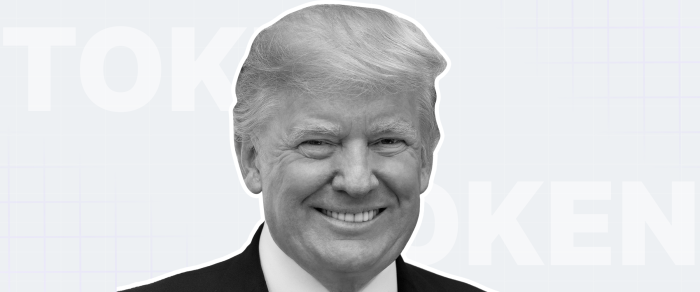Crypto Winter is Here. How Did It Happen?
Every significant cryptocurrency had a decline in value in the first half of 2022.
A few crypto-related businesses are currently experiencing severe financial issues, including bankruptcy. The term “crypto winter” has been used to describe this market cooling spell.
Contrary to expressions like “market correction” or “bear market,” crypto winter lacks a clear definition.
“Generally speaking, it’s a period of persistent lower pricing,” says Rayhaneh Sharif-Askary, head of investor relations at Grayscale Investments, a digital currency asset management firm.
We’ve clearly crossed the threshold, wherever that may be. This is why:
- The fall was broad and continues to this day: as of July 24, 2022, all 100 of the biggest 100 cryptocurrencies are valued less than they were nine months ago.
- The reduction in value was dramatic: on July 24, 2022, the total value, or market cap, of the top 100 cryptocurrencies was $1 trillion. This is a 62% drop from a market capitalization of $2.7 trillion on November 7, 2021.
Compared To The Last Crypto Winter, This One Is Special
The latest crypto winter occurred in 2018 when the price of Bitcoin fell by more than 50% from its all-time high in the midst of a traditional financial bull market.
What is the distinction between then and now? “This is the first time we’re really seeing crypto trade lower [than previously] in a classic bear market,” says Joel Kruger, a market strategist at LMAX Group, a cryptocurrency services provider for institutional investors. The bear market may make a cryptocurrency rebound more difficult.
“As crypto has grown in size, there has been increasing awareness of the connection with traditional finance and fundamentals,” Kruger adds.
The present decline in cryptocurrency prices is part of a worldwide sell-off in practically all asset classes rather than something unique to cryptocurrency. There have been a few examples of crypto-specific difficulties, such as the collapse of the algorithmic stablecoin TerraUSD (known by the ticker UST) and its sister coin TerraUSD, which supported it (known by the ticker LUNA). Terra will be referred to as LUNA because it sounds so close to TerraUSD. (Note: TerraUSD and LUNA were later renamed TerraClassicUSD and TerraClassic, respectively.)
What Happened With These Two Coins?
The failure of TerraUSD and LUNA resulted in $40 billion in investor losses, causing ripple effects across the cryptocurrency sector.
TerraUSD is a so-called algorithmic stablecoin that claims stability with a consistent price of $1. And LUNA, its companion coin, was intended to behave more like a typical cryptocurrency, with the potential for significant price gains.
An algorithmic stablecoin combines economics and technology to reportedly offer stability to an otherwise volatile asset type. In theory, TerraUSD’s price would remain stable due to LUNA’s 1:1 convertibility with TerraUSD and TerraUSD’s redemption value of $1. It would be a safe refuge for crypto investors in the same way that cash is for regular investors.
This project fell apart in May. In April, LUNA was valued at $116. Since May, the price has been stable at roughly $0.0001. Federal Reserve Vice Chair Lael Brainard compared it to a classic bank run in a July speech at the Bank of England Conference. The abrupt collapse of LUNA upset individual investors as well as businesses whose business models relied on this initiative to deliver on its promise.
Unexpected Bankruptcies and Frozen Customer Accounts
While the technology behind crypto is new, the financial dilemma that some crypto enterprises have recently encountered is not:
If you borrow huge sums of money to make financial wagers that fail, you will have difficulty repaying the original debt.
“Specifically, we noticed problems in companies that concentrated on centralized financing,” Sharif-Askary explains. “As in any market, leverage exacerbated market fluctuations.”
Or, as Warren Buffet famously stated, “you only find out who is swimming naked after the tide goes out.”
The cases below demonstrate how fast fortunes shifted for organizations that were clearly swimming in success only months ago.
- Three Arrows Capital, a crypto hedge fund, controlled around $10 billion in assets at its height until the crypto price falls forced the business to default on billions of dollars in loans. Its founders fled into hiding after declaring bankruptcy, and their current locations are unknown.
- Celsius Network debuted in 2017 and functioned similarly to a bank. Users could deposit cryptocurrency and earn up to 17% interest, according to the company’s website, and Celsius would make loans against those deposits. (Last year, officials in some states called Celsius goods illegal.) The business prohibited its 1.7 million members from withdrawing or transferring cash — worth $20 billion at its peak — in June 2022. The firm declared bankruptcy in July. According to a court statement, the company’s assets fell by 80% between March 30 and July 14, 2022.
- Voyager Digital, a cryptocurrency brokerage firm, declared bankruptcy in July. It had halted consumer withdrawals prior to this filing. The inability of Three Arrows Capital to make a $350 million loan payment was regarded as the principal cause of the company’s financial difficulties.
According to Kruger, the troubles these firms are encountering are “management issues, not asset class concerns. These are folks who are overexposed while attempting to profit from a thriving market.”
However, these occurrences highlight the reality that important consumer safeguards that are available in traditional financial products, like FDIC insurance, which protects depositors if their bank fails, are missing in crypto.
What Should We Wait?
According to one widely held belief, drawdowns occur every four years. For some, consistency is a reason for optimism.
“I believe many of the investors we’ve spoken with see this as an opportunity,” Sharif-Askary adds. “It serves as a warning that leverage in a system may amplify losses. It emphasizes the significance of diversification.”
The early price cuts may have worn off, but winter has not yet melted into spring. Sharif-Askary cites a July Grayscale white paper in which it is predicted that Bitcoin, a proxy for the crypto sector, would have “another five to six months of negative or sideways price movement.”
Meanwhile, news of certain organizations freezing client accounts is a good reminder to perform your due homework when picking companies to partner with, rather than a cause to write off the industry entirely, according to Kruger. “A warning bell should ring in your heart” if you come across claims of unusually high profits, he adds.



